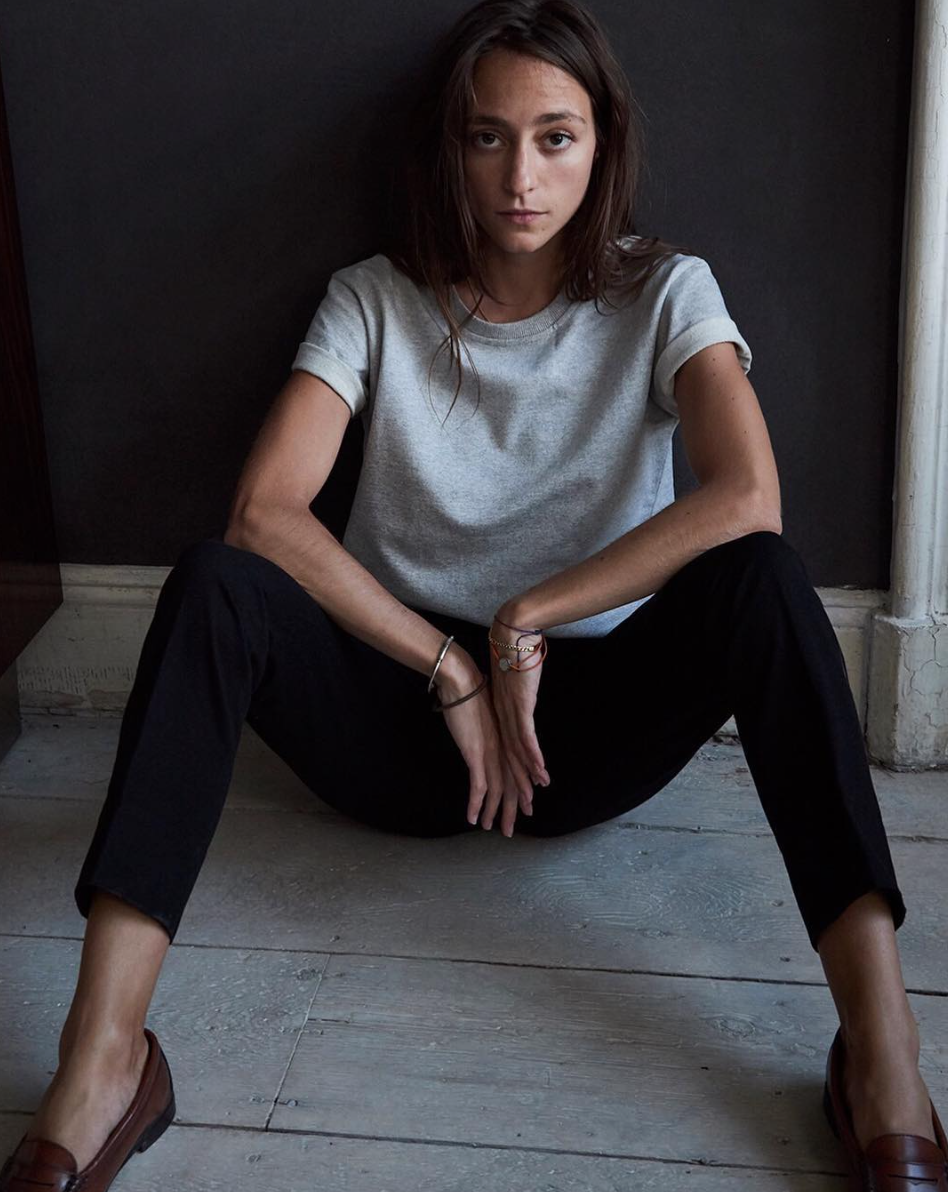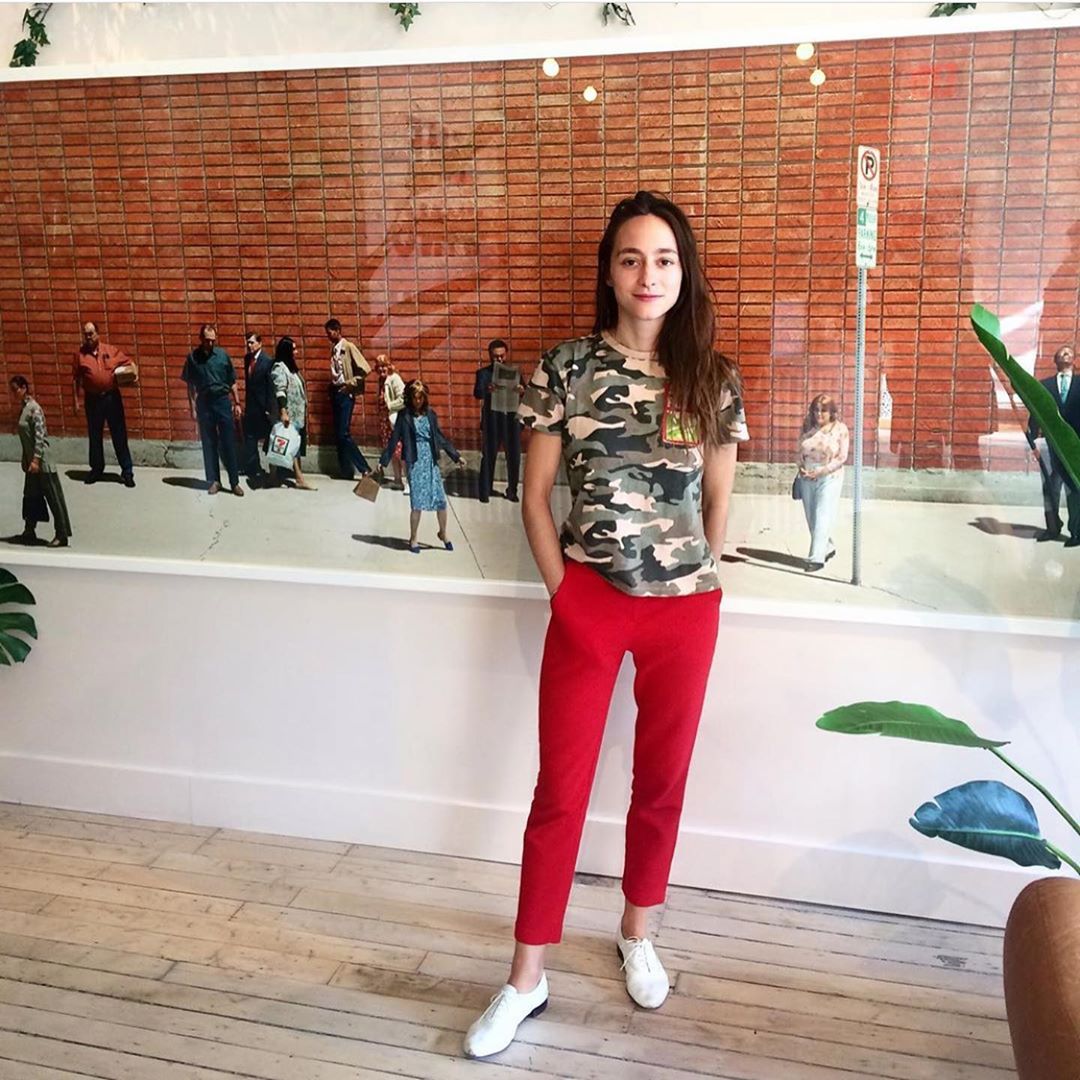IMAGE CREDIT Pamela Hanson
Curating Art, Creating Community
In Hannah Gadsby’s acclaimed comedy special Nanette (yes, we’re obsessed, and Douglas was quite the follow up!) she remarked, “Art history taught me that, historically, women didn’t have time to think thoughts - too busy napping naked alone in the forest.” Sigh. Yes, art throughout history has long reinforced damaging tropes about gender, race, and class. At the same time, it’s clear that art and artists have challenged this ugliness, and given us new ways of looking at the world and ourselves. Often, curators are our window into this world. There’s an inherent power and gatekeeper role in curation. Curators make key decisions about which artists and messages gets seen, and which don’t. And in some cases they have the power to subtly steer the cultural conversation.
With this in mind, we sat down with independent art curator Lolita Cros to dig deeper into the relationship between art and power, curator and artist. Cros is well-known for her commitment to exhibitions featuring emerging and established artists alongside one another - upending the traditional hierarchy and democratizing access and consideration. You may know her as the curator for women’s coworking space The Wing where she debuted The Salon at The Wing with an exciting cohort of artists.
IMAGE SOURCE Alyssa Greenberg for Coclico
ON GETTING STARTED
I started curating when I was in college. I was interested in the art I was learning about and realized pretty quickly there must be a similar range of artists out there today. So I did one-on-one studio visits with the artists at school, wondering if one day they would become the artists people study in college.
I started with a group show in an empty apartment and loved the experience and I realized that I wanted to keep doing it. Before I graduated, I did a show in New York and wanted a weird location for it. So I curated a show at a Chinese restaurant in New York. That's when I started working with more established artists. My goal was always to show emerging and established artists alongside one another and present them on the same pedestal, and that way offer audiences the opportunity to fall in love with the work regardless of who made it.
'CAN I ACTUALLY DO THIS?' FROM SIDE HUSTLE TO THE REAL-DEAL
After that, I just kept doing it. Eventually, in 2015, I quit my job and went fully into curating. I started to do more solo shows because I wanted to try the experience of working one-on-one with an artist and help develop their career. Then in 2016 I started working on The Wing Soho.
ON CURATING A FEMALE-IDENTIFYING SHOW AT THE WING
It was a learning curve. Before I worked with The Wing I worked with a lot of female-identifying artists - not really on purpose, but every time I did a group show it was like 50/50 female-to-male. With my first show with The Wing I didn't know I was going to keep working with them, so I engaged all the artists I’d worked with before, not really thinking about gender.
But as The Wing kept growing, I needed to represent more women, different ages, different ethnicities, different cultures, different generations. It's about inclusivity. I'm not a curator of gender, and as much as I'm still learning and I want to learn more about it, it's important for me to just kind of stay in my lane - which is to show emerging and established artists together, no matter how they identify.
ON SHOWING EMERGING AND ESTABLISHED ARTISTS TOGETHER
When I go to an artist's studio and they're emerging and they're so interesting, so smart, I’ll look at them and know - that artist is for sure going to become big someday, for sure. There's just no doubt about it. And yet no one knows about them. You have to learn them, they're so important. I have something there that other people don't have - I have a good gut feeling, so I trust it and show them the way I show established artists.
ON FOCUSING ON THE ART, NOT THE ARTIST
The reason I don't have names next to each of the art works at The Wing is I don't want people to first look at the name and then look at the work. I want them to treat it the same way they'd treat museum-level work by museum-level artists. And the beauty of the audience there is that most people don't even know the bigger names, so they truly will like something that they just like.
IMAGE CREDIT Lolita Cros
Lolita at The Wing in front of a photograph by artist and filmmaker, Alex Prager
ON OPENING ART UP TO EVERYONE
I've been around artists my whole life - whether they were musicians, or visual artists, or worked in the movie industry. I was always kind of jealous how some people sort of got it - how some people could go to a concert and just enjoy it, and people go to the movies and just enjoy it, read their book and just enjoy it, but when it came to an art show it was always, "Oooh I'm going to an art show, I'm so fancy." And I'm like - why? Why does it have to be fancy? Why can't it just be as fun as going to a concert? That always made me cringe a little bit.
So my question is - how did I fall in love with art? How did I get introduced to art in a way that wasn't exclusive, that wasn't an ordeal? It was a really good art history teacher who didn't use complicated words. He was very straightforward, made it feel very lively when he was talking about dead artists. And so I wanted to keep doing that with exhibitions.
I think art should always have some kind of familiarity so that people can be intrigued by it, but it's a learning curve. My parents didn't know anything about art when they started seeing my exhibitions, they probably got a little bit scared at first. They were like, “Woah I don't get any of this art, it's super conceptual,” and then the second they read about it or I talk to them about it, they understand it, they get it.
EVERYTHING STARTS WITH A CONVERSATION
Everything has to start from a conversation. I don't think I could ever curate a show without having spoken to the artist and read every single thing about them beforehand. Because, everything is about context. Without context you could look at a Rothko and be like, "Oh, he's a serial killer and loves blood and that's why all his pieces are in red." You really need the context behind it to be interested in an artwork, but also to understand it.
Working with an artist is kind of like meeting a friend. The reason you become friends with someone is because something clicked, something happened, and you got stimulated by them and want to learn about them and you want to see more of them. It's kind of like that with art.
ON SPACE
I think first about the space in terms of context. What is associated with that space? So for instance, if tomorrow I did an exhibition in an old bank that closed after 2008, that'd be a very heavy context. I have to think about that more than the color of the walls. I have to think about what a city means and how to incorporate the artist from that city into that space because they are a part of the building of this community. When I was younger, it was more about the novelty of the space, like the Chinese restaurant. I can't say that I considered the context of it. I thought more about the aesthetic because it was a really over the top, kitschy restaurant, with fake gold everywhere.
I think I would probably curate it differently if it was today because I'd do more research on that aesthetic and what it means to the Chinese culture. I think about the context more than the space itself.
ON VULNERABILITY - WHEN IT'S NOT ABOUT HER
It's hard because my role is to highlight an artist's work. It's not about me. So vulnerability is weird because I have to put it on hold when it comes to me, but at the same time it is hard when you're talking about an artist's work when they're standing right next to you. So I don't know - you just have to do it.
The reason I'm so in awe of artists and intrigued by them is because they have insane courage. They basically put all their subconscious onto a canvas, onto a sculpture, onto anything - and then have other people look at it, and sometimes even judge it. And sometimes they really fail, but will come back with a series that's so much stronger than the last one. The courage that they have is just incredible.
ON PROVING HERSELF WRONG
I don't really get off on anger. I get off on proving someone wrong. And most of the time it's proving myself wrong.
WHY THE ART WORLD IS SO EXCITING RIGHT NOW
The amount of undiscovered talent is incredible. I feel like I have an insane superpower. I feel like I know the future. You know? I feel like I'm holding the keys to so many great art works. I always think about my future children, or nieces or nephews, about how they’ll come visit me and see all the amazing artists I’ve worked with and that I've known from the start.
"NO ONE CARES" - AND WHY IT'S LIBERATING
One piece of advice that applies to life in general is that no one cares.
Advice I’ve been giving a lot recently is - take everybody's advice with a grain of salt. Some people may seem like they know a lot, and especially when you're a young woman - you'll get a lot of unsolicited advice. Don't always take it.They might not really know better than you.
WHAT SHE'S READING
Ninth Street Women by Mary Gabrielle.
SHE'S OBSESSED WITH ...
Marian Goodman. I have a huge amount of respect for her - she’s stayed incredibly strong through different artists leaving her or going through different phases of their careers. She also has one of the best rosters, all her artists are incredible.
IMAGE COURTESY OF
Gabriella Sanchez and Charlie James Gallery
WHAT'S NEXT?
The thing I love is pretty wide. I'm definitely going to keep doing what I do. The model might change here or there. Now that I've curated art by emerging and established artists, I'm getting more focused on selling art in bigger collections. I want to keep working with different types of clients on different types of projects, and always accompanying exhibitions with education, or studio visits open that are open to the public, these kinds of things. Creating connections through different communities and different levels of artists is always interesting to me.
WHO TO KEEP YOUR EYE ON ...
A lot of them are in Chicago and LA. Gabriella Sanchez is
incredible. She's in LA, she has a solo show at Charlie James Gallery.





